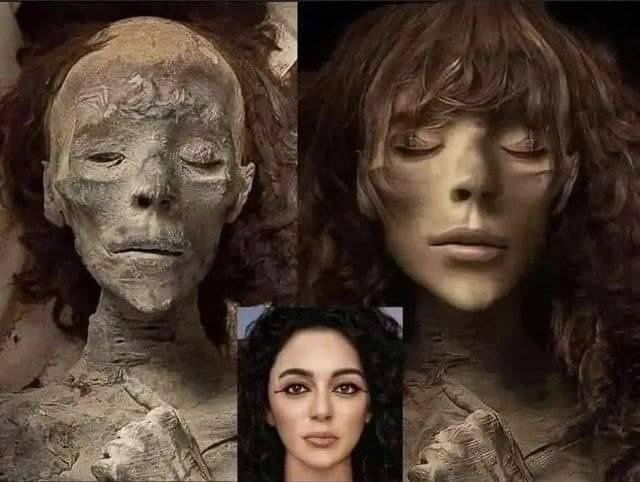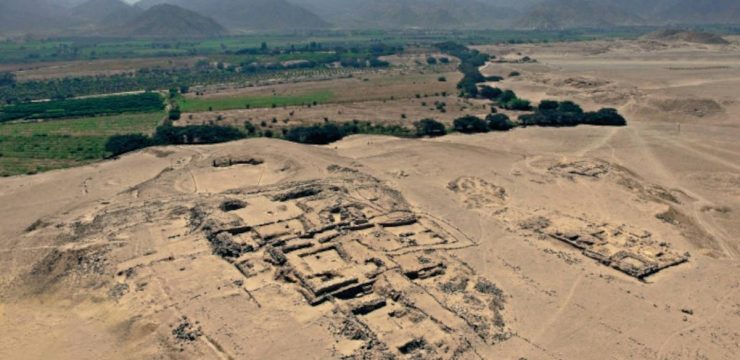Queen Tiye, the wife of Pharaoh Amenhotep III and the mother of Akhenaten, has long been a subject of historical and archaeological intrigue. While many scholars rely on evidence from various sources, some discussions regarding her ethnicity have led to debates, particularly on whether she was of sub-Saharan African descent or of a different lineage. The argument that Queen Tiye was Black often stems from the observation of an unpainted bust made of yew wood, which naturally darkens over time. However, this perspective overlooks other critical evidence, including her mummy, her physical features, and genetic analysis.

One of the most famous depictions of Queen Tiye is a portrait head from the Amarna Period, currently housed in the Egyptian Museum and Papyrus Collection at the Neues Museum in Berlin. This bust, made of yew wood, features intricate detailing, including a crown of two feathers, lapis lazuli inlays, and precious metals such as silver and gold. The wood’s dark coloration has led some individuals to conclude that this reflects Tiye’s actual skin tone. However, yew wood naturally darkens over time, and without any paint or additional color application, it does not necessarily represent the queen’s true complexion. This is a crucial distinction in art interpretation—many ancient Egyptian sculptures and busts were created in materials that aged differently over centuries, and their coloration today does not always accurately reflect the original intention of the artists.
Looking beyond artistic representations, Queen Tiye’s mummy provides more concrete evidence of her appearance. Her well-preserved remains reveal features that are more consistent with populations from North Africa and the broader Eastern Mediterranean region. Her hair is naturally brown, straight to wavy, and free-flowing—traits that are less common in sub-Saharan African populations. Additionally, her facial structure includes a high-bridged, arched nose and moderately thin lips, further aligning her with North African and Eurasian ancestry rather than a distinctly sub-Saharan African phenotype.
Another compelling piece of evidence lies in her genetic background. DNA analysis has placed Queen Tiye within haplogroup K, which is of Eurasian origin. This haplogroup is commonly found among populations in Europe, the Near East, and North Africa, and it is not a genetic marker typically associated with sub-Saharan African ancestry. Moreover, her parents, Yuya and Thuya, have been extensively studied, and their mummies exhibit similar features, reinforcing the notion that Queen Tiye was not Black in the way some modern interpretations suggest.
The fascination with the racial identity of historical figures is not unique to Queen Tiye. Discussions about ancient Egypt often become entangled in modern racial constructs, even though such categorizations were not necessarily applicable in the same way in antiquity. Ancient Egyptians did not classify themselves according to the racial divisions that are common today; rather, they identified based on cultural and geographical distinctions. The diversity of Egypt’s population throughout different periods of its history included interactions with Nubians to the south, Libyans to the west, and peoples from the Levant and Mediterranean regions. This diversity was reflected in Egyptian art, which often depicted individuals with a range of skin tones, hairstyles, and facial features, depending on artistic conventions and symbolic meanings rather than strict biological representation.
It is also important to consider the historical context in which Queen Tiye lived. As the wife of Amenhotep III, she held a powerful position in the 18th Dynasty, a time of great prosperity and diplomatic expansion. Egypt maintained extensive trade and political relationships with various regions, including Nubia, the Levant, and the Mediterranean. While Queen Tiye had significant influence and was one of the most prominent women of her time, her ancestry was firmly rooted in the elite Egyptian nobility, as evidenced by the burial sites and records of her family.
Moreover, ancient Egyptian depictions of individuals were highly stylized, often emphasizing symbolic attributes over literal representation. For example, pharaohs were frequently depicted with idealized features, regardless of their actual physical appearance. Skin tones in Egyptian art were also used symbolically; men were often shown with reddish-brown skin, while women were depicted with lighter tones, reflecting societal roles rather than ethnicity. This artistic convention can be observed across many dynastic periods, illustrating that color in art was not necessarily a direct reflection of an individual’s genetic heritage.
Queen Tiye’s prominence in Egyptian history is undeniable. She was deeply involved in state affairs, playing a crucial role in diplomatic relations and religious transformations that would later influence the reign of her son, Akhenaten. Her legacy is one of political acumen and strong leadership, making her one of the most significant queens of ancient Egypt. Reducing her historical importance to a debate about race overlooks the broader significance of her contributions and the complexities of ancient Egyptian society.
The claim that Queen Tiye was Black, based primarily on the yew wood bust, disregards multiple lines of evidence that paint a more accurate picture of her heritage. Her mummy, DNA results, and parental lineage all suggest a background consistent with the broader North African and Eastern Mediterranean populations rather than a sub-Saharan African origin. The emphasis on race in modern discussions about ancient Egypt often reflects contemporary social and political viewpoints rather than historical realities.
Ultimately, while discussions about representation and identity in history are important, they should be based on comprehensive and reliable evidence rather than assumptions drawn from isolated artifacts. The case of Queen Tiye demonstrates the necessity of a multidisciplinary approach—one that considers archaeology, genetics, art history, and historical context to build a fuller understanding of the past. Ancient Egypt was a civilization of immense complexity, cultural exchange, and artistic expression, and its people cannot be easily categorized using modern racial constructs.
As historians and archaeologists continue to study ancient Egyptian remains and artifacts, the picture of its rulers and elites becomes increasingly clear. Queen Tiye was a remarkable figure, known for her intelligence, political influence, and enduring legacy. Rather than focusing solely on her racial identity, a more meaningful discussion lies in understanding her contributions to Egyptian history and the lasting impact of her reign. By examining all available evidence—mummies, genetic analysis, artistic representations, and historical records—we can appreciate Queen Tiye’s significance within the broader framework of ancient Egyptian civilization, free from the constraints of modern racial classifications.





